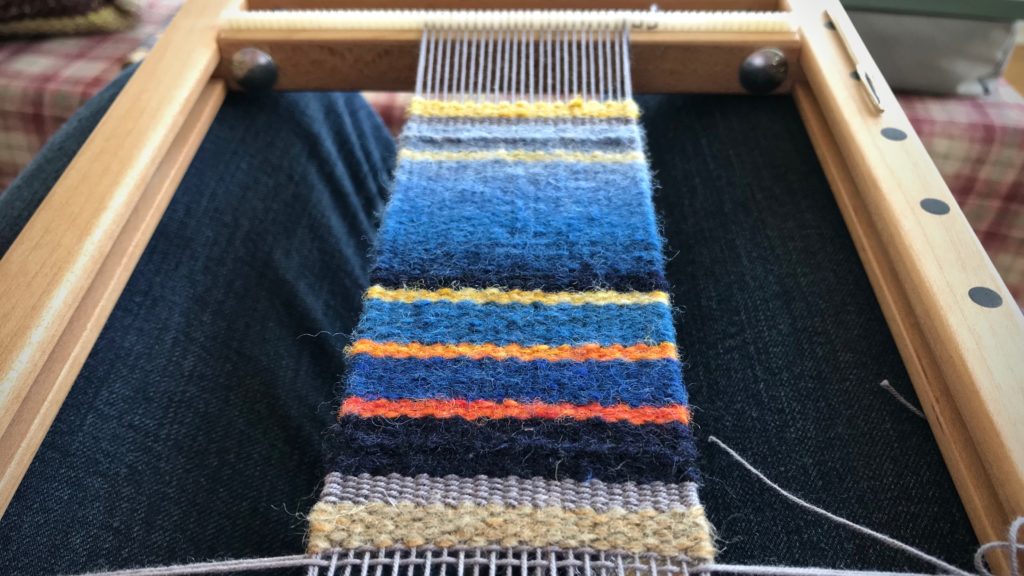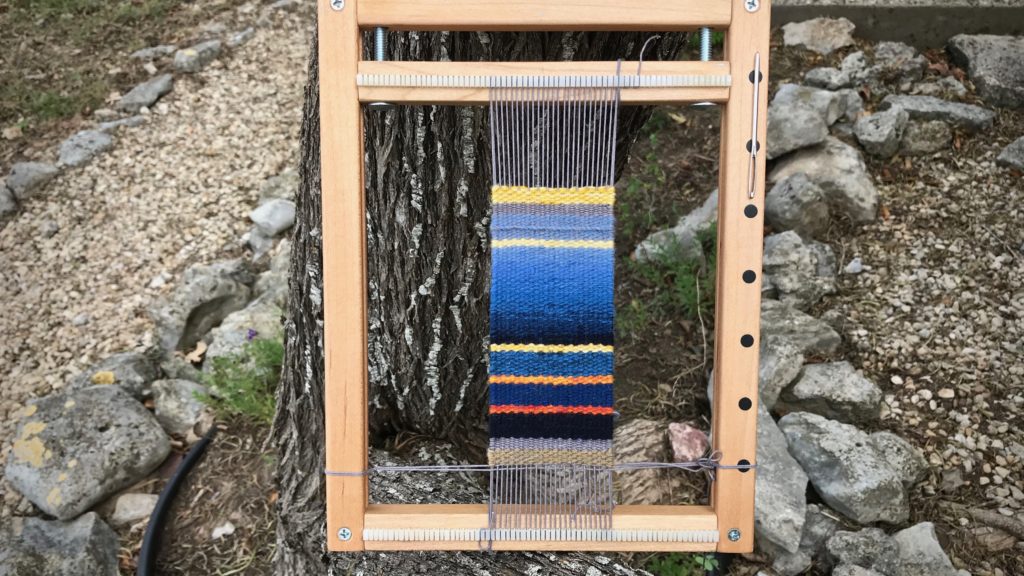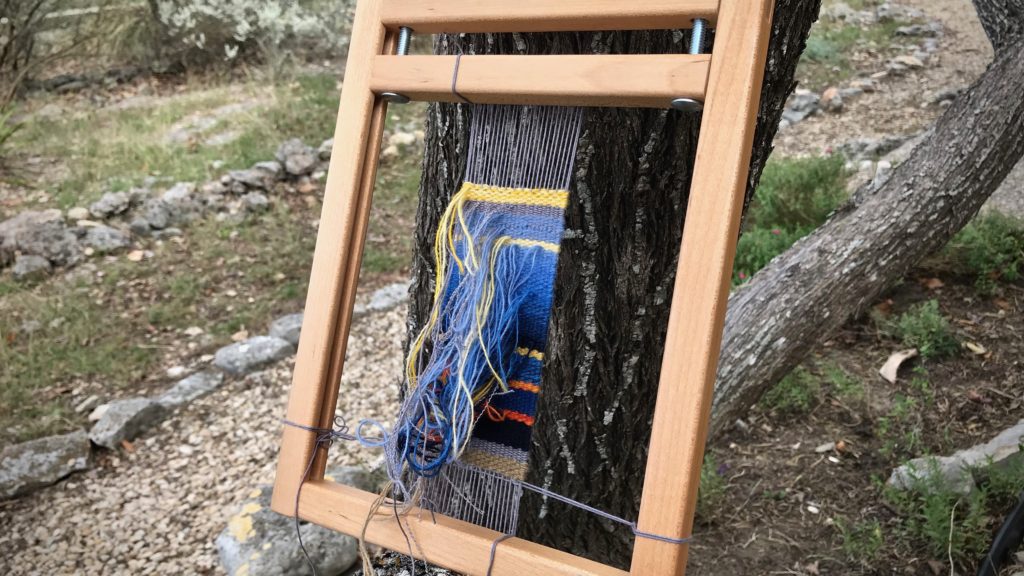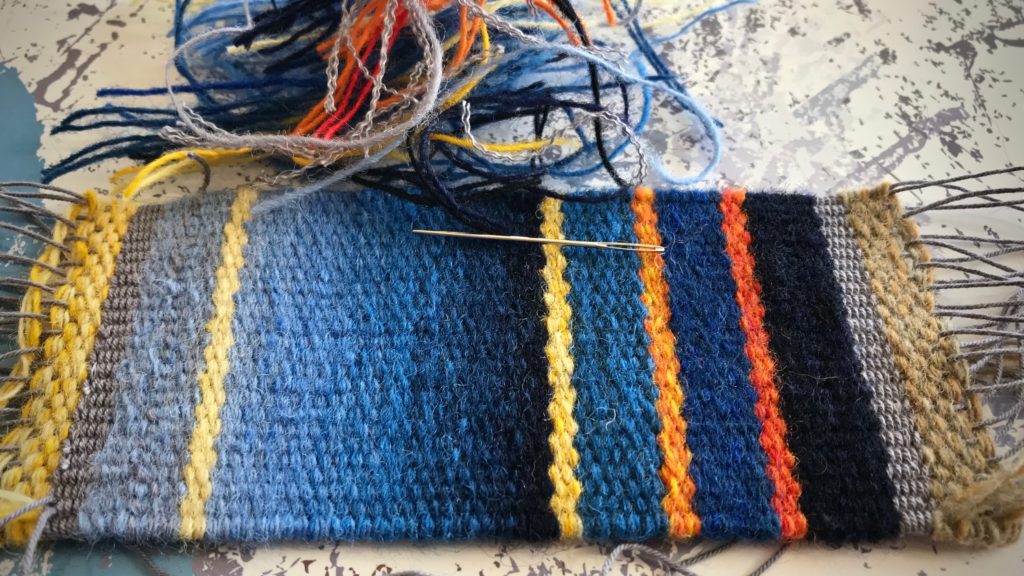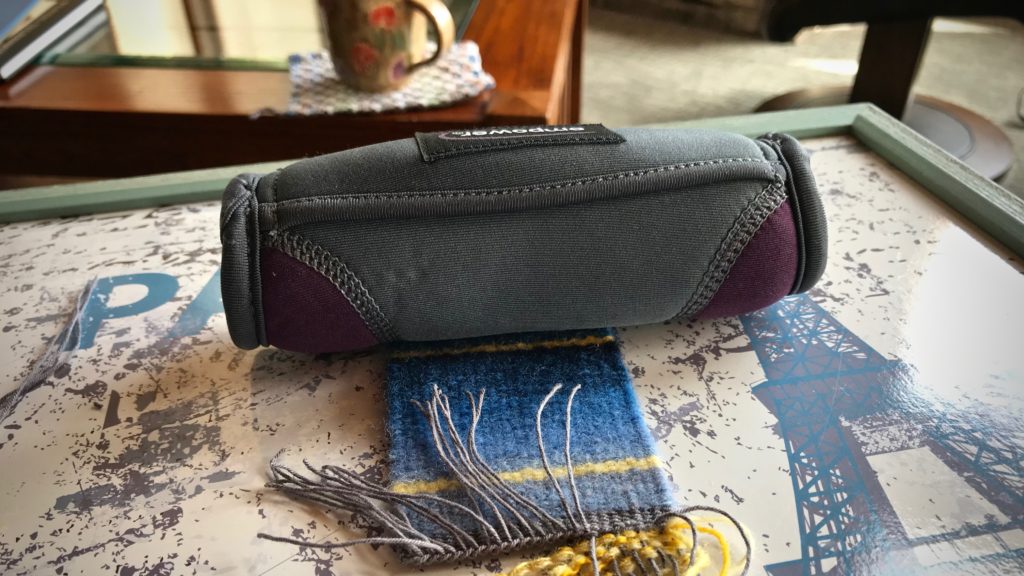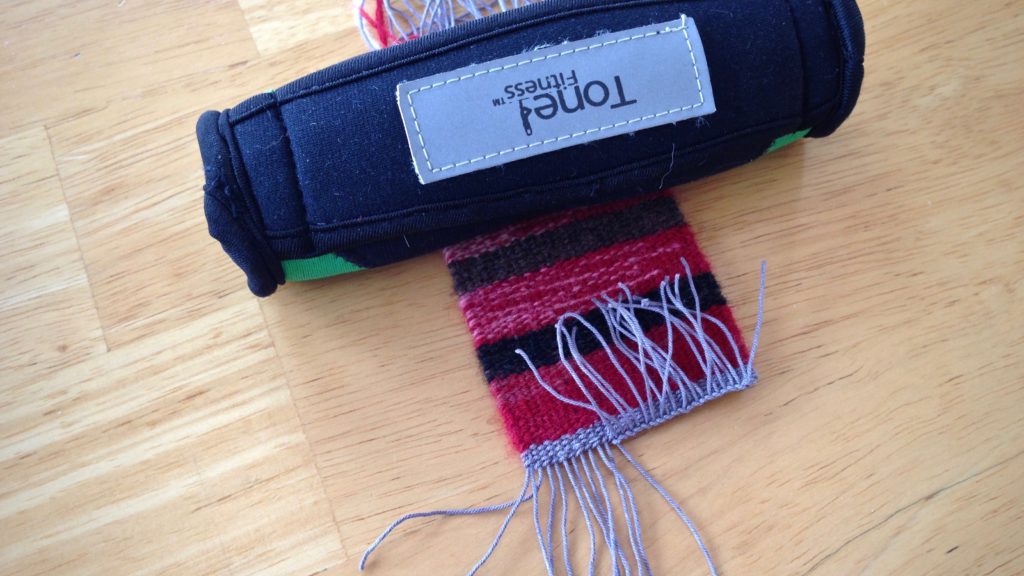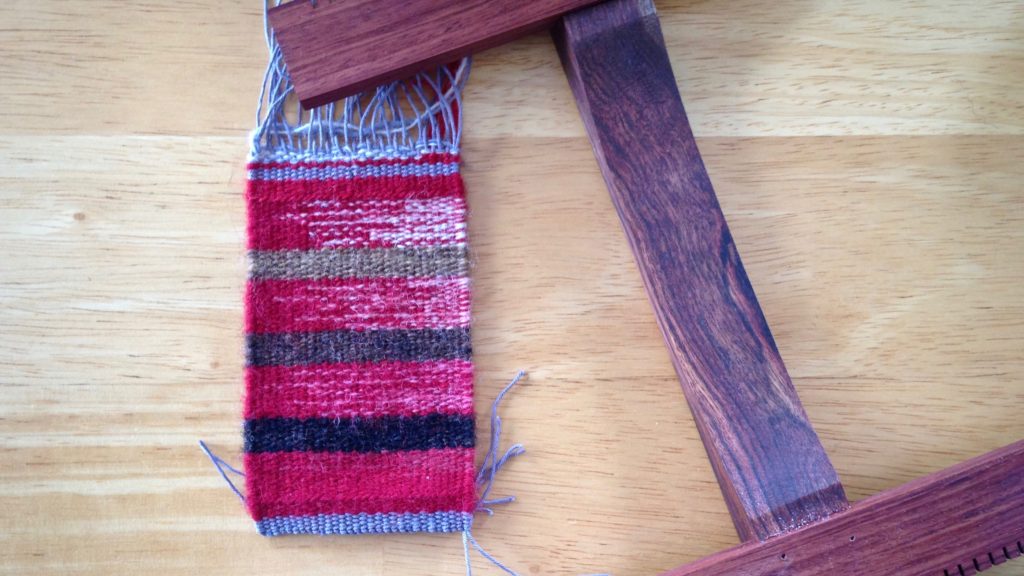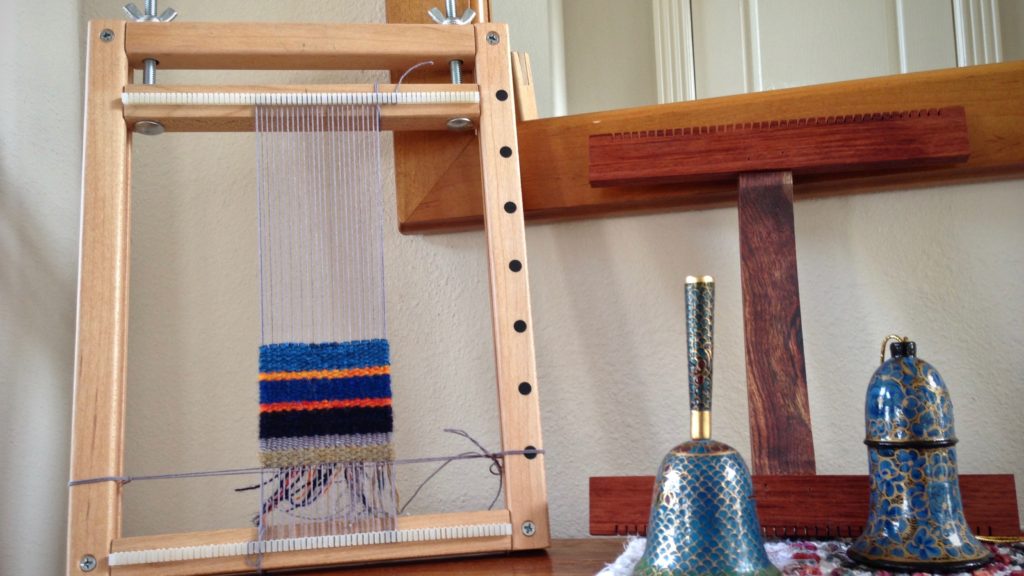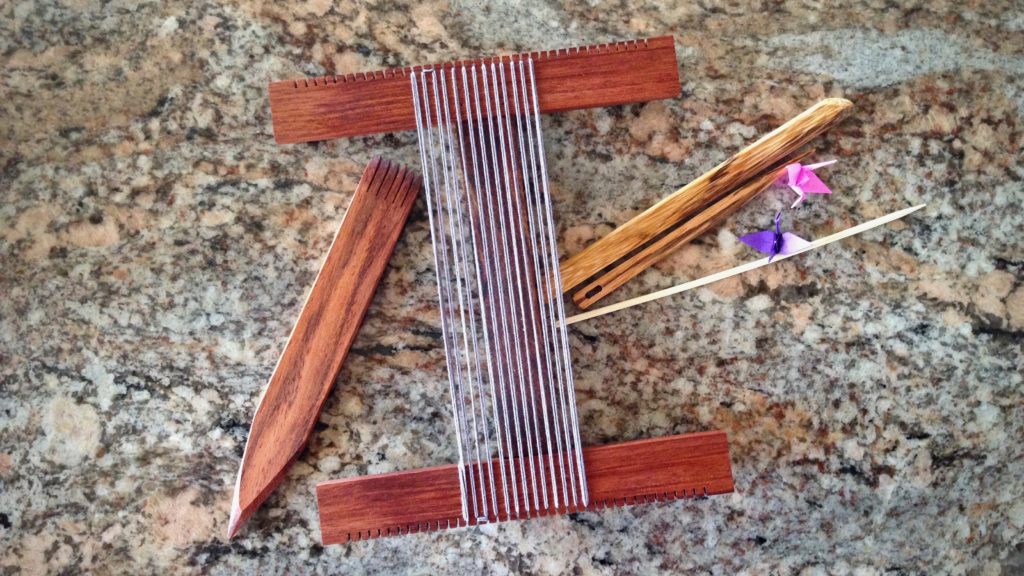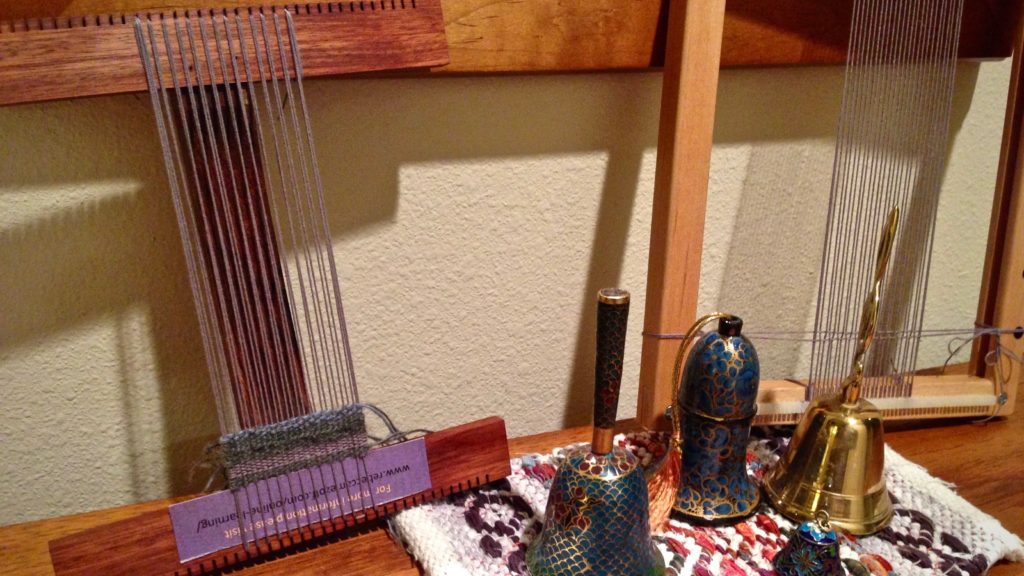Pictorial tapestry on the floor loom requires a good working knowledge of basic tapestry techniques. Doing small tapestries on a tapestry frame loom, line by line, is one thing I do to hone these basic skills. I have finally reached the happy realizaton that I am no longer frustrated by meet and separate.
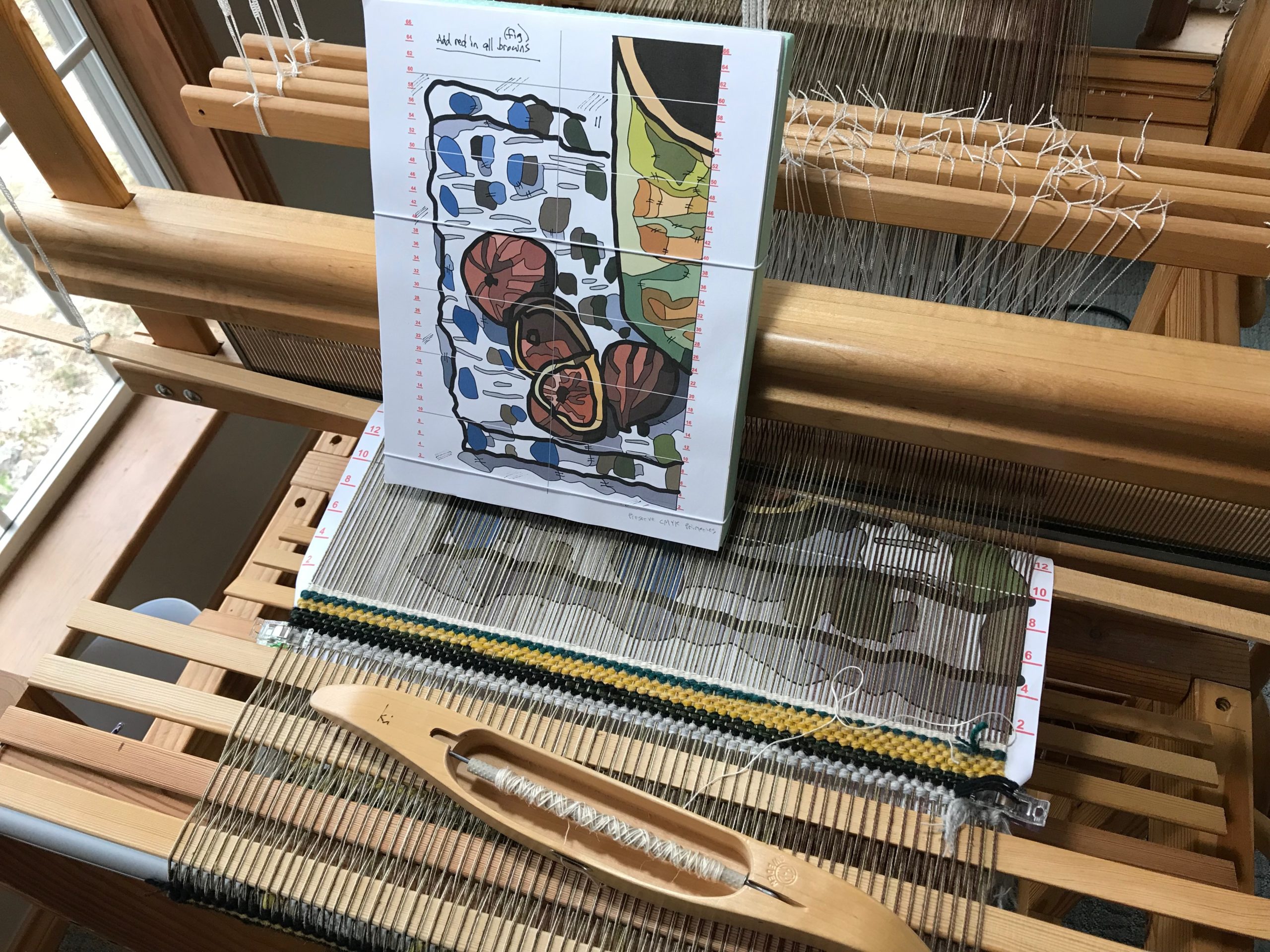
Meet and separate is a simple concept. It’s not hard to understand. Two butterflies come toward each other (meet) in one shed, and they move away from each other (separate) in the next shed. If you are working with only two butterflies — piece of cake! But when you need to add one more butterfly in a row you can find yourself in a pickle!
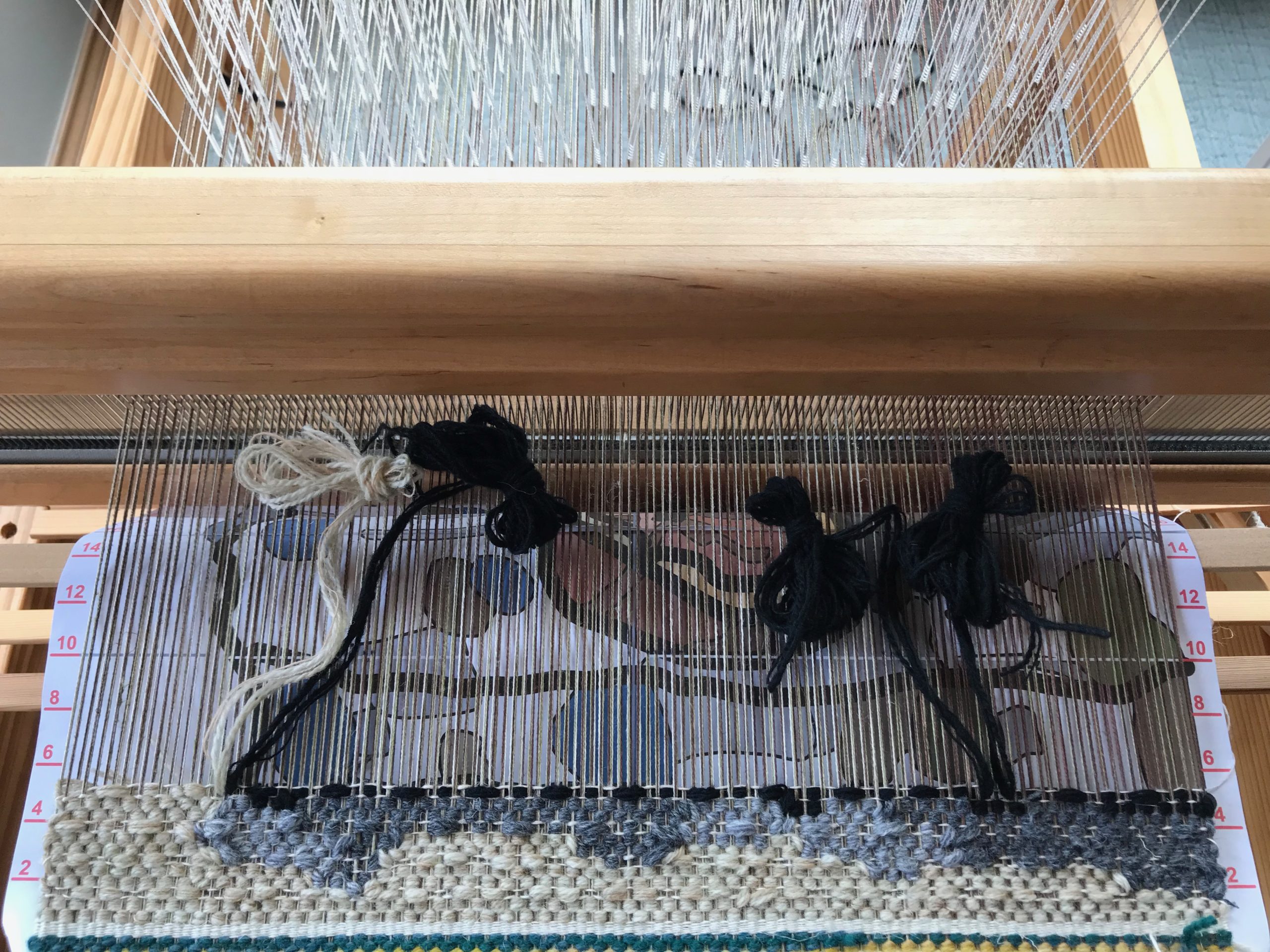
Resources that help me understand basic tapestry techniques, including meet and separate:
The Art of Tapestry Weaving, by Rebecca Mezoff
Tapestry Design Basics and Beyond, by Tommye McClure Scanlin
Tapestry Weaving, by Kirsten Glasbrook.
Workshops by Joanne Hall for weaving tapestry on a frame loom.
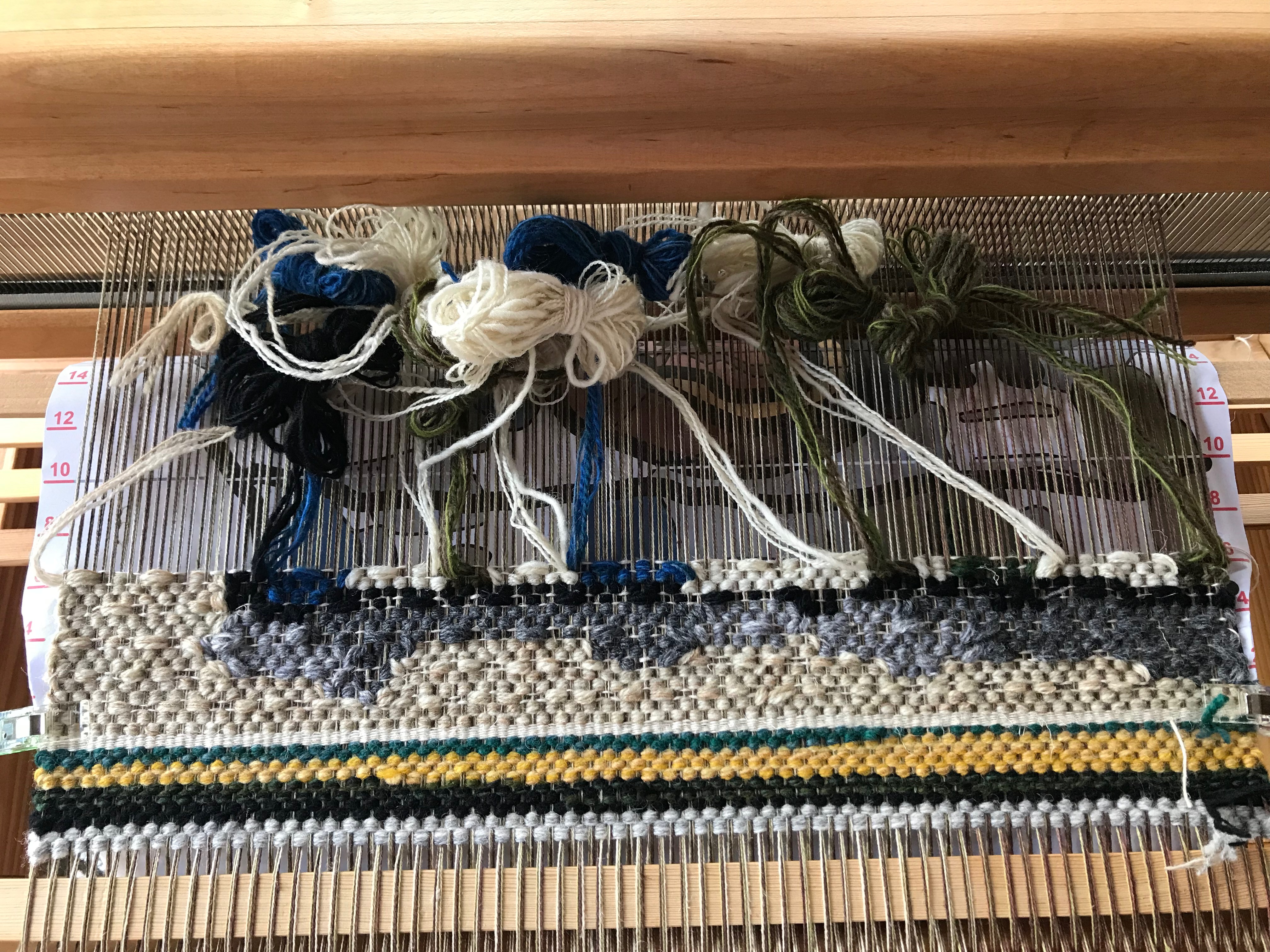
Meet and Separate strategies:
- Add two butterflies at a time. Remove two butterflies at a time. (Easier said than done.)
- Add one butterfly near where you are ending another butterfly.
- Add a “two-headed” butterfly, with the two heads going in opposite directions.
- If you must add or remove a single butterfly, expect to reset one or more other butterflies. (To reset a butterfly, cut it off and tuck in the tail, and then reverse its direction.)
- Think ahead. You may find that the next row will need one more (or one less) butterfly, and the problem will resolve itself.
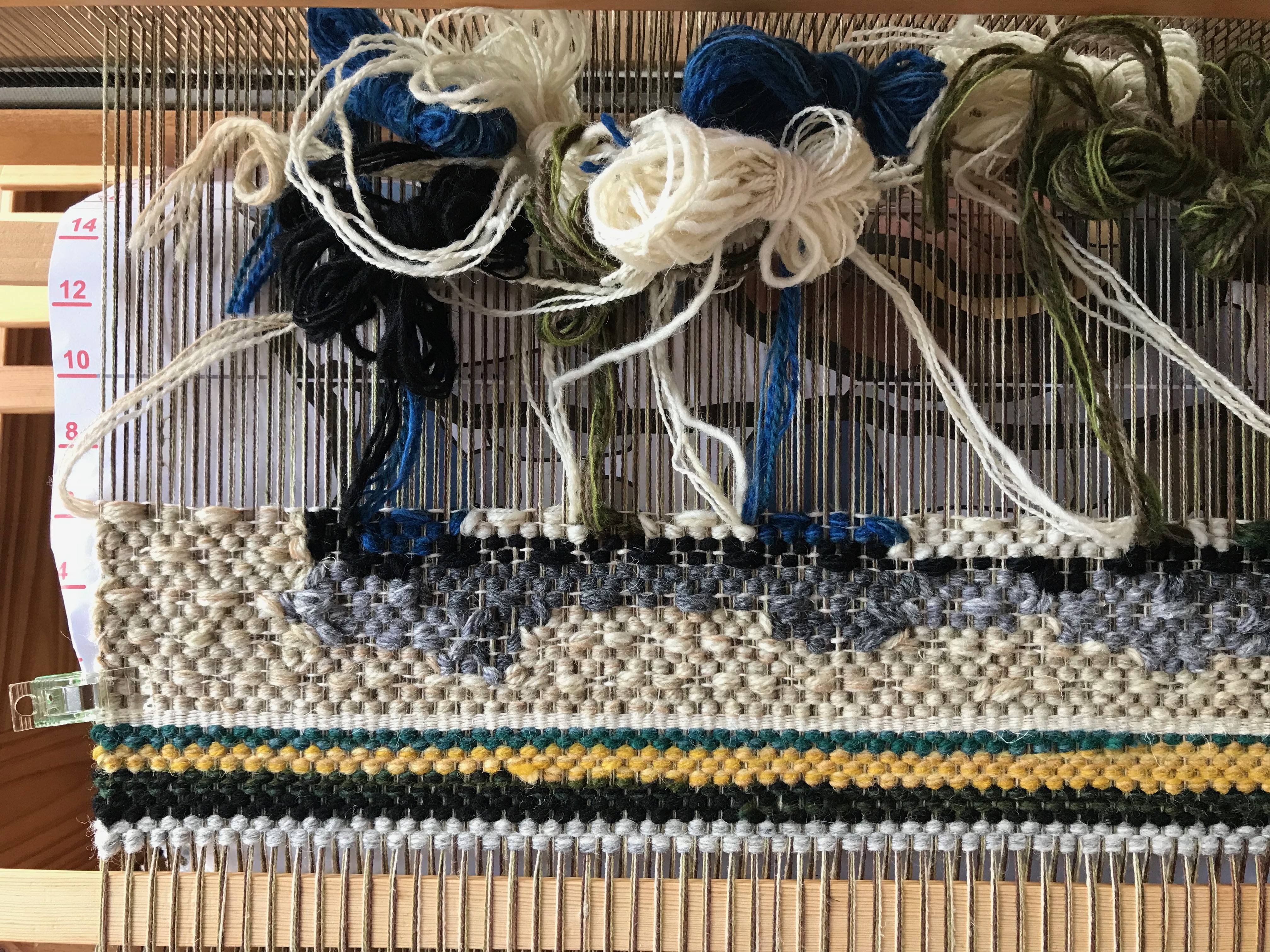
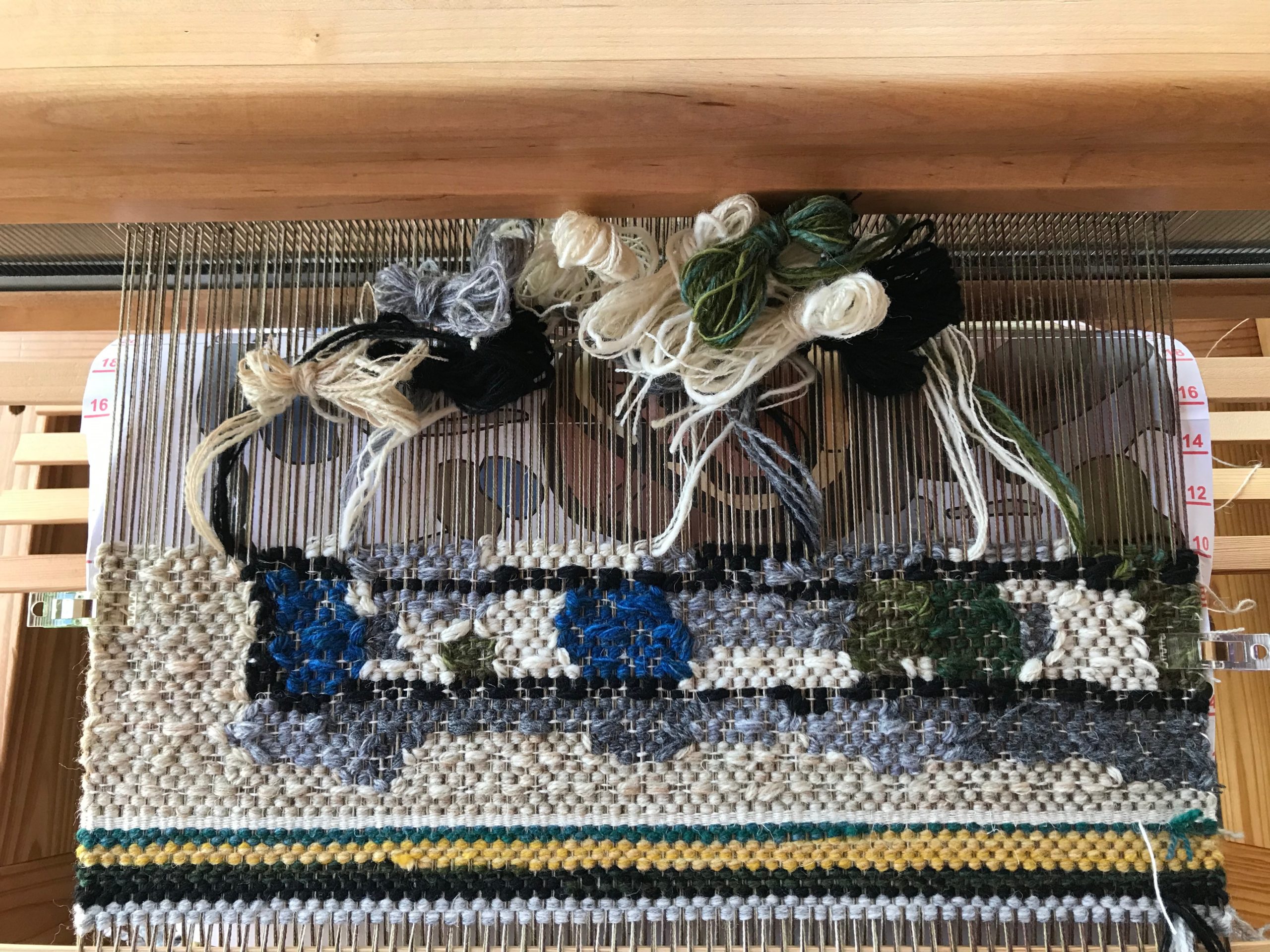
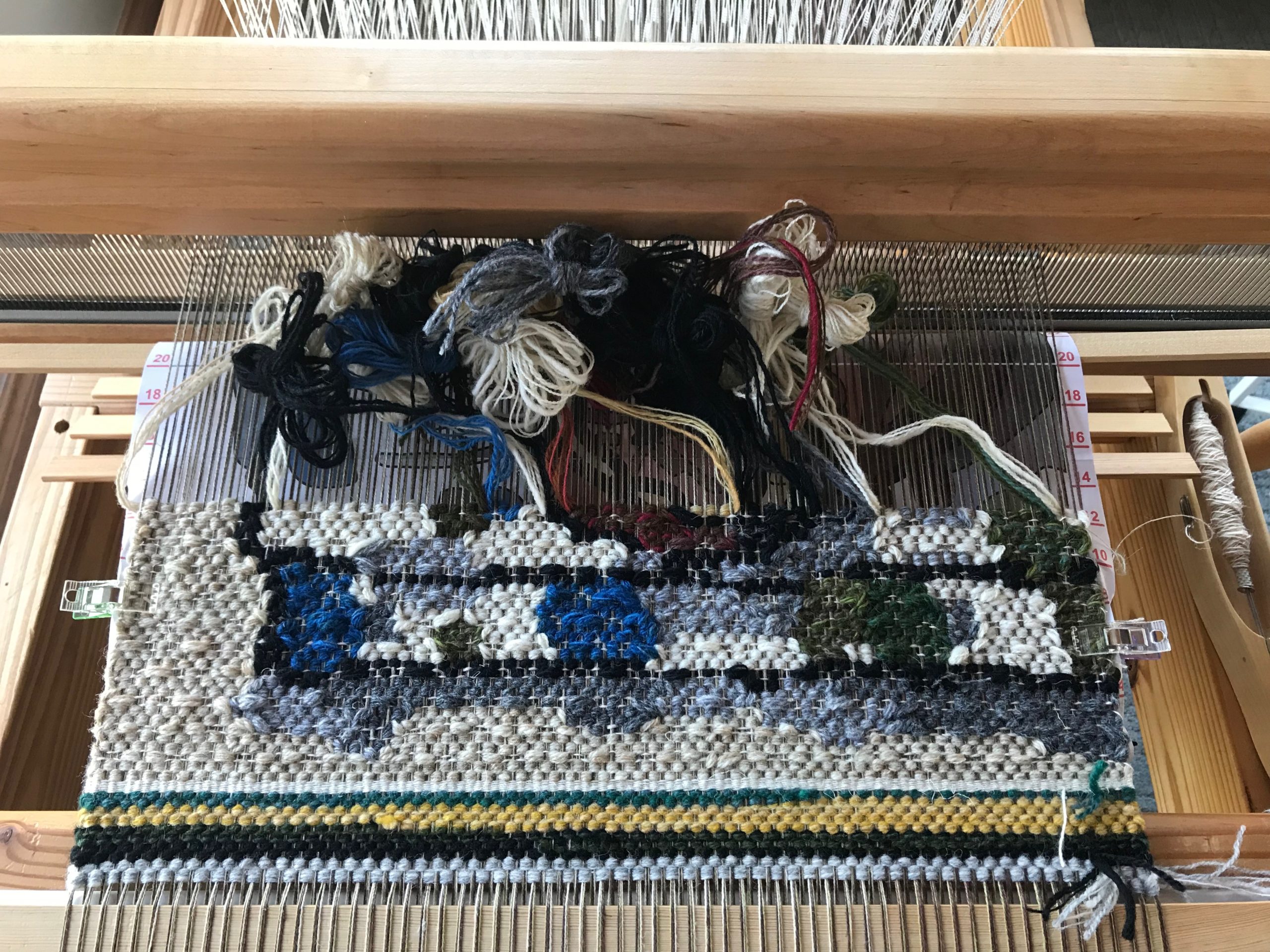
Every row is a game of strategy. Where is the best place to add in a new color butterfly? How can I add or remove a butterfly and cause the least disruption? It’s an intriguing puzzle. The frustrating part has become the fascinating part.
May your frustrations become your fascinations.
Glad to Meet,
Karen

